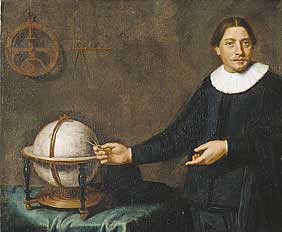Polynesians arrived in New Zealand in the course of the 14th century. They were part of the last great Polynesian expansion which started somewhere around the Cook Islands and led to the establishment of populations in the Eastern Pacific (Easter Island), the North-East (Hawaii), and the South-West.
This expansion was probably driven by climate change inducing overpopulation, and when those people learned how to travel long distances by boot from their homes to yet unpopulated islands, they made plans to resettle and went on their way. The journey eastwards probably reached as far as South America and the return journey was made as well, because this introduced the Polynesians to the sweet potato, which then spread to the other Polynesian populations. This scenario supports the view that these journeys were carefully planned and were carried out with a high degree of navigational skill. The Maori name for New Zealand Aotearoa, the Land of the Long White Cloud may give a clue as to how this land mass was discovered. Clouds towering high above the land mass would have been visible for more than 100 km before the land itself was.
Polynesians brought most of their culture with them during this expansion, which speaks against an accidental colonisation. Pigs (kunekune), dogs (kuri) and sweet potato (kumara) were brought to the new islands so that Polynesian agriculture could be established with the human population, but also that determined human follower, the rat (kiore), came along for the ride. In most places, chickens were brought along, too, but in New Zealand there is no trace of the chicken, as if it were not even introduced to the country during colonisation. The reason for this may be that there were already large edible birds in New Zealand when the Maori arrived. They were given the name moa, which is the Polynesian word for chicken. You can just imagine the planning committee discussing what they needed to bring along to New Zealand, “Man, we’re not taking any chickens with us, giant chickens galore there already!” Nor would it have been practicable to transport these “chickens” back home, as they reached up to 3 m in height.
There has been some speculation as to whether Maori reached New Zealand before the last expansion, as some genealogies (whakapapa) seem to reach back further than the 14th century as early as the 9th century. But a consistent problem with traditional transmission is its infidelity. Reduplications, omissions, competition for whose whakapapa is the more impressive or longer make the data unreliable.
At first Aotearoa must have been paradise. If you had quarrelsome neighbours you could get in your waka and move down the coast; there was plenty of Kerikeri Fried Moa, supplemented with your own agricultural produce, and on the coast at least, the temperature was moderate throughout the year. But within 100 years the moa had become extinct, increasing population density meant that the freedom to come and go meant having to go to the colder and sandfly-ridden south to find a place in the sun. In this time the islands also revealed their nastier side: Volcanoes and lahars, earthquakes and tsunamis might hit at any time and take everything away.

Remarkably the population recovered during the course of the last century, so that there are now about 600,000 living in New Zealand, and, of course, some have migrated elsewhere as well, mainly to Australia. Largest population growth was in the time of the post-WWII boom. At the beginning of the 20th century, New Zealand was one of the wealthiest countries in the world, and, unlike in Australia, the native population was never completely excluded from this prosperity, although they were certainly marginalised and treated poorly.
Real reparation was only started in the 1990s, with the Waitangi Tribunal. There is still a way to go, and I think that education is going to be the decisive battleground. There are schools where Maori language, culture and traditional knowledge are taught; but nowadays much more is needed to get a good job, and that in the end is what is going to bring you further, not the Waitangi settlements alone. The knock-on effects of inadequate education are still quite visible in New Zealand today, such as unemployment, poverty, teen mums, and health issues. I don’t see the Maori giving up their culture, though, and that would be a rare victory.
